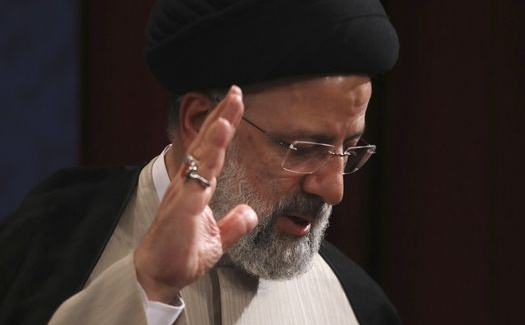Incoming Iran President Ebrahim Raisi
In Iran’s version of Monopoly, the most important squares are not a Tehran Broadway or Park Place. Instead, they are the Electricity Company and Water Works.
Much of the country has been subject to power cuts, both planned and unplanned, in recent weeks. Contract workers in the energy sector have gone on strike. In the oil-rich southwest, scorching heat and drought have reduced rivers, lakes, and reservoirs to low points. Mismanagement, including of the regulation of water level with dams, has spurred protests across the region. At least eight demonstrators and a police officer have been killed.
See also Iran Angered by UN Criticism of Force Over Water Shortage
Far from being a one-off episode, the protests mark an ongoing issue for Iranian Governments. In June-July 2018, protesters were injured in clashes with security forces, amid rallies complaining about “undrinkable” water with high levels of salt. In September that year, gunmen killed 25 people in the city of Ahwaz.
Yet the curiosity — and the political significance — is that these national issues are not being felt nationally at the moment. In the affluent northern suburbs of Tehran — the avenues and boulevards in Velenjak, Evin, Fereshteh, and Zafranieh — the trees are lush, the rose bushes are in blossom, and the hedges lining the streets, are neatly trimmed. All are regularly watered by local caretakers and gardeners.
As for electrical shortages, millions of air conditioners are still churning 24 hours a day to fight the long, hot summer. So, from this vantage point, how can there be discontent in the southwest?
The Clock of Legitimacy Ticks
It is that difference in experience across Iran that will give the incoming Raisi Government a bit of time and space, but also pose a challenge. The geographic and political center of the Islamic Republic will not be in crisis. At the same time, it cannot be insulated from the images of protests hundreds of miles away.
President Ebrahim Raisi and his officials will continue to blame US sanctions for the problems, especially as they consider a step back from any agreement in the Vienna nuclear talks. The risk for them is that the tactic is wearing thin, as inflation has officially risen to 44%, the Iranian currency is still more than 80% below its value of 2018, and oil markets do not open up.
Before Raisi’s inauguration on August 3, the Revolutionary Guards have declared they are taking control of the water situation in Khuzestan Province, the center of the protests. But there is no magic press release, even in the Guards outlet Fars, which can bring rain or an overnight of long-neglected and mismanaged infrastructure.
So does the new Government reach agreement in the Vienna talks, even if the resolution falls short of full dismantling of the US sanctions and freedom of action for the nuclear program? Or does it risk the insistence of the Supreme Leader’s unilateral “Resistance Economy”, with the vaunted grail of a China investment and trade agreement still a distant prize?
Supported by Ayatollah Khamenei, Raisi will have a grace period as he names a Cabinet. He will build on his record, as the head of judiciary, of tackling corruption. However, that period is likely to be a short one, given the gravity of the situation and his inexperience with an economic portfolio.
No doubt the official line will be that Iran has withstood the “maximum pressure” of the Trump Administration. But many Iranians, even in leafy northern Tehran, will be looking more for a minimum standard of living with assured incomes and services.
The clock of legitimacy is likely to tick loudly and quickly.


“The clock of legitimacy is likely to tick loudly and quickly.”
Is that democrat’s way of not wanting to see the inconvenient truth? A marketable democrat narrative…
48% voted
12% spoiled ballots
Purportedly, about half of the 36% votes went to raisi. Is a government with 18% vote a legitimate government in the democrat’s book? Funny how that goes.